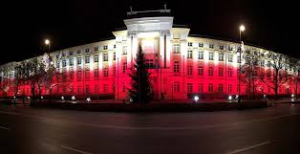
A nation with a proud cultural heritage, Poland can trace its roots back over 1,000 years.Positioned at the centre of Europe, it has known turbulent and violent times.
This unitary state is divided into 16 administrative subdivisions, covering an area of 312,679 square kilometres with a mostly temperate climate. With a population of over 38.5 million people, Poland is the sixth most populous member state of the European Union. Poland’s capital and largest city is Warsaw.
There have been periods of independence as well as periods of domination by other countries. Several million people, half of them Jews, died in World War II.
A new era began when Poland became an EU member in May 2004, five years after joining NATO and 15 years after the end of communist rule.
It was the birthplace of the former Soviet bloc’s first officially recognised independent mass political movement when strikes at the Gdansk shipyard in August 1980 led to agreement with the authorities on the establishment of the Solidarity trade union.
Poland’s economy is considered to be one of the more resilient of the post-Communist countries and is one of the fastest growing within the EU. Having a strong domestic market, low private debt, flexible currency, and not being dependent on a single export sector, Poland is the only European economy to have avoided the late-2000s recession.
PLATINUM SPONSORS :




